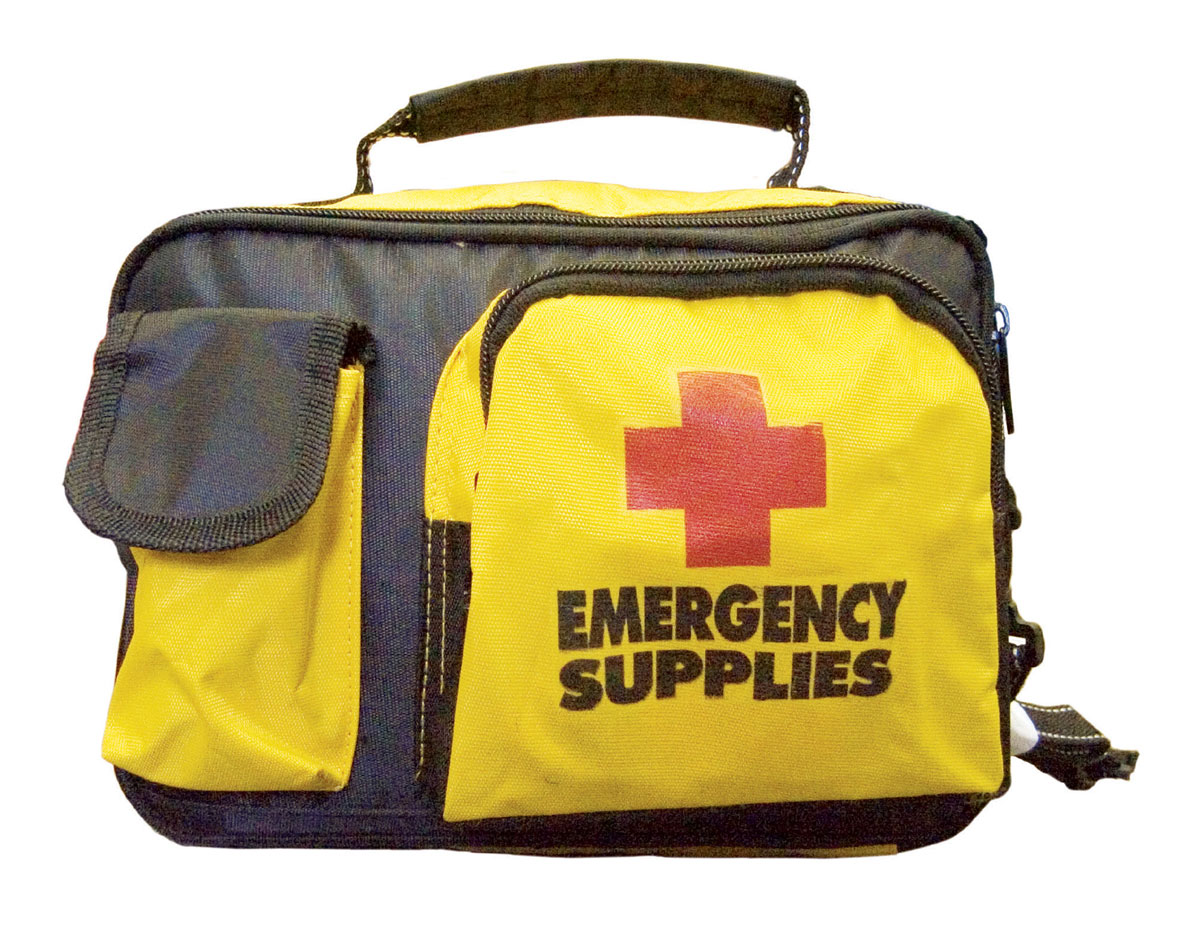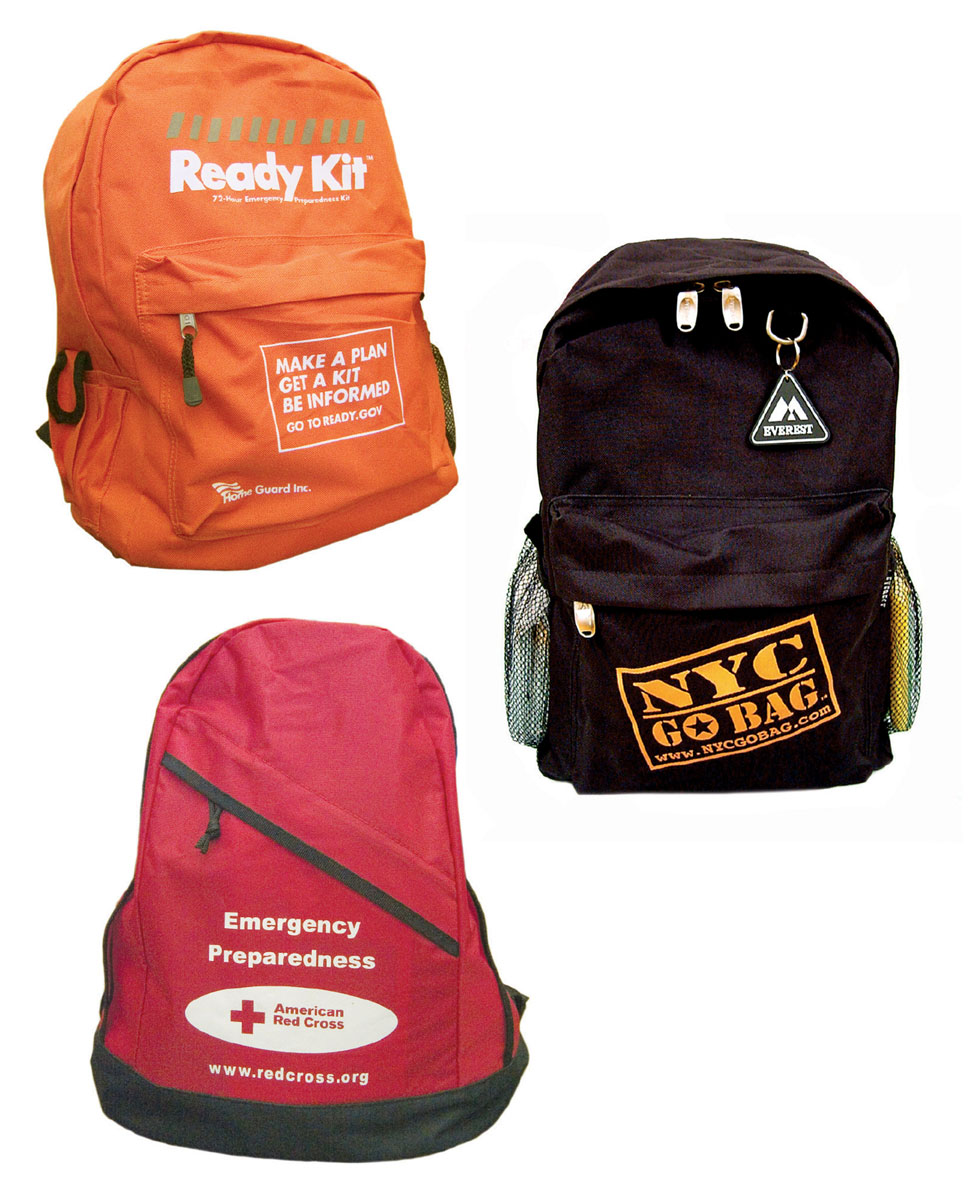Be Ready!
The existential prerogative of the Go Bag
Nicholas Herman

Within days of the terrorist attacks of 9/11, a strident call for readiness sounded across the U.S. The rhetoric of preparedness, embellished by politician and preacher alike, maintained that not only were Americans not ready for future attacks, they had forgotten how to be ready.
In response, a broad spectrum of public and private agencies began to advocate for preparedness. Chief among these was the Department of Homeland Security (DHS), which launched a public service campaign insisting that “Every American has a role in strengthening the nation’s preparedness,” directing citizens to its instructional website, www.ready.gov, and urging them to call 1-800-BE-READY. Today the DHS has honed its message down to three core directives: Make a Plan, Be Informed, and Make a Kit.
The most tangible (and marketable) of these directives is the third. Popularly known as a “Go Bag,” the kit is designed to be a source of ready succor in the event of an emergency. Most of the recommended contents are basic first-aid and household supplies, commonplace items whose uses do not begin to match the fervent rhetoric of preparedness. What, then, is the function of the Go Bag? Are Americans (and the DHS) really concerned with adequate preparation for disaster, or is some deeper impulse at work?
The rhetoric of preparedness and an emphasis on what might be called “accoutrements of readiness” are not new. They took hold of the American imagination at the beginning of the twentieth century, a time of dramatic demographic change when both immigrant and rural populations moved to urban centers. In response to the ensuing social upheaval, church and community groups sought to renew traditional family values, while patriots evoked heroic images of frontier masculinity. These intertwined ideologies formed the backdrop for the two most prominent preparedness movements of the time—Universal Military Training (UMT) and the Boy Scouts of America (BSA)—both of which exploited fears of moral and civic breakdown (characterized by falling Church attendance and the perceived emasculation of men) as major themes in their recruitment efforts.

The UMT and the BSA alike endorsed military discipline and rigorous outdoor activity as means of reforming American society and protecting democracy. UMT founder Dr. Leonard Wood, a friend of Franklin Roosevelt (and fellow Rough Rider), argued that his brand of military therapeutics could cure “Christian Pathology.” At spartan UMT camps, which sprung up across the nation, citizen-soldiers were required to pack and carry all their gear in heavy rucksacks. The well-stocked bag was also integral to the BSA, which capitalized on the allure of the Wild West and championed a blend of patriotism, woodcraft, and romantic frontier know-how to build character in boys and girls. The Boy Scouts (with their enduring motto “Be Prepared”) looked to the literature of Ernest Thompson Seton and Daniel Carter, reformers whose classics The Birchbark Roll and American Boy’s Handy Book included lists of items essential for living in the bush. Learning how to pack one’s bedroll, cook kit, and first-aid supplies was always the first step in successful scouting. The Scouts also introduced into their repertoire carved sticks and totems, staples of Native American medicine bundles—another, albeit unorthodox, kit.
The UMT and BSA were followed by other preparedness movements—from ROTC to Cold War Civil Defense—all of which promoted a version of the Go Bag. Fear of nuclear fallout precipitated 1950s readiness efforts, including the first municipal programs to encourage preparing for a hypothetical emergency via building shelters and stockpiling gear. Today, militia and survivalist groups argue for more radical preparedness measures that include civilian acquisition of military supplies to shield against biological or nuclear attack.
The Go Bag promoted by the DHS clearly resembles these predecessors not only in content but in context. Historically and today, in times of civic unrest, social conservatives have promoted preparedness to combat liberalizing trends in American society. Their call often betrays a strong religious tone. For instance, some conservative Christian groups see America’s liberal social mores as a cause of terrorism, arguing that the attacks of 9/11 represented punishment for moral turpitude. The Go Bag, as a traditional vehicle for reform, assumes that the architecture of a safe democracy is built on a prepared society of disciplined and patriotic families—an argument that mirrors the agenda of conservative movements throughout the twentieth century.
As Tom Ridge, first Secretary of the U.S. Department of Homeland Security, tells us: “Terrorism forces us to make a choice. We can be afraid. Or we can be ready.” We can also be afraid and “ready.” Because, of course, the Go Bag is all about fear—fear of the unknown. The compunction to be ready, the illusion that we can be ready, the pressure to clarify one’s needs in the face of an abstract threat, is reduced to a kind of ritual packing and unpacking of seemingly essential items into a kit. That the contents of Go Bags remain virtually the same throughout the twentieth century, despite an evolving litany of threats, illustrates that they are motivated by social concerns more than utilitarian ones. In light of this, the Go Bag reveals itself as an existential rather than functional prerogative.
Nicholas Herman is currently a lecturer in the Sculpture Department at the
Yale School of Art. He lives in Brooklyn.
Spotted an error? Email us at corrections at cabinetmagazine dot org.
If you’ve enjoyed the free articles that we offer on our site, please consider subscribing to our nonprofit magazine. You get twelve online issues and unlimited access to all our archives.